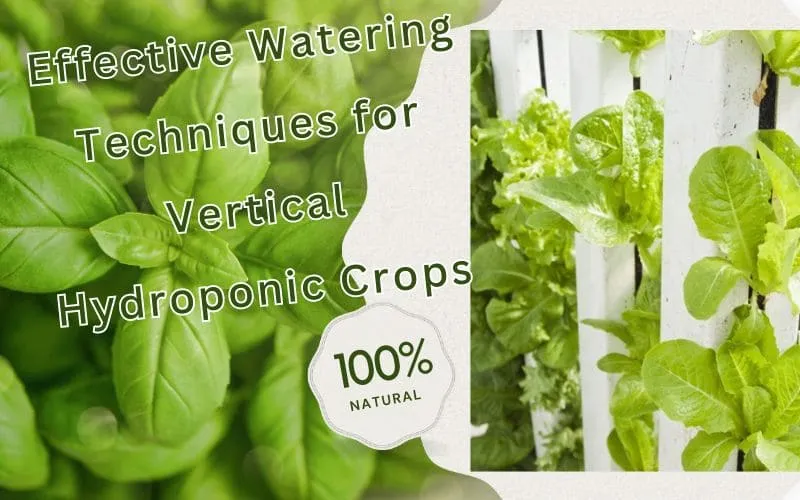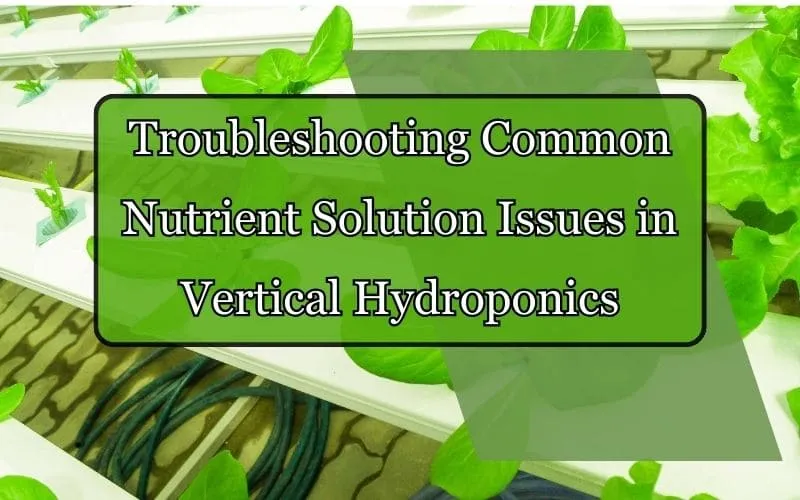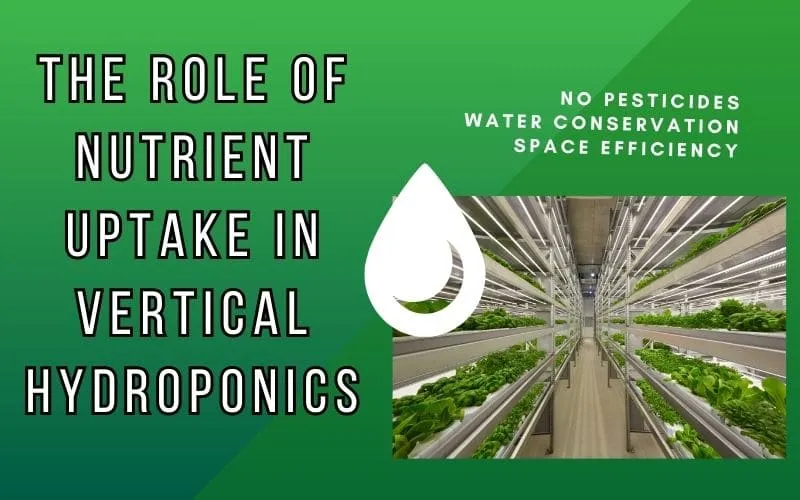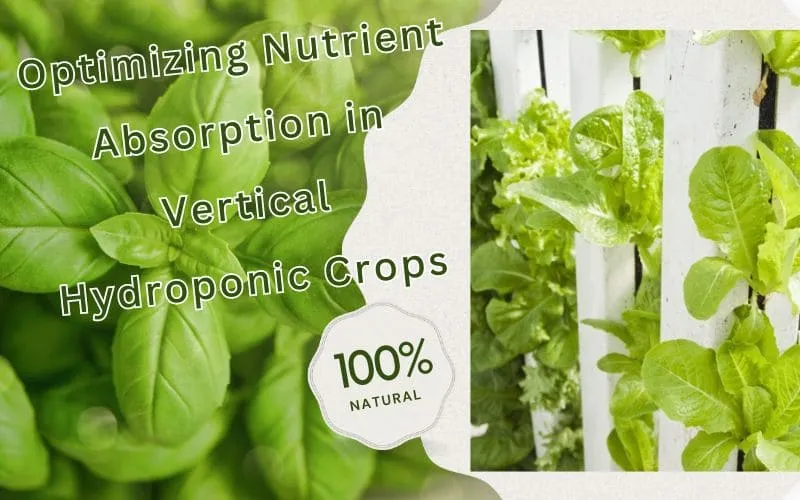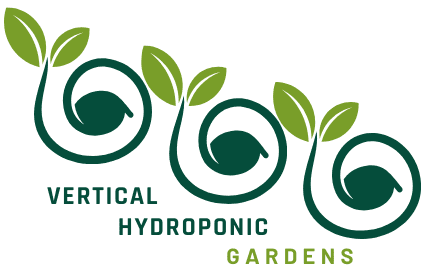Unlocking the Potential: Nutrient Solutions in Vertical Hydroponics

Introduction
Welcome to the world of vertical hydroponic gardening! In this article, we’ll delve into the fascinating realm of nutrient solutions and their profound impact on the success of vertical hydroponics. We’ll explore the key components of nutrient solutions, their specific application in vertical hydroponic systems, and the remarkable benefits they offer to plant growth and sustainability.
Understanding Nutrient Solutions in Vertical Hydroponics
What are Nutrient Solutions?
According to Harvard Science in the News “In 1860, Sachs published the “nutrient solution” formula for growing plants in water, which set the foundation for modern day hydroponic technology.” Nutrient solutions are meticulously formulated mixtures of essential minerals and nutrients that are dissolved in water to create a balanced and optimized feeding system for plants in vertical hydroponic setups. These solutions provide plants with all the necessary elements they would typically obtain from soil, but in a more controlled and efficient manner.
The Importance of Nutrient Solutions in Vertical Hydroponics
Vertical hydroponic gardening relies heavily on nutrient solutions to provide essential elements for plant growth. In the absence of soil, these nutrient solutions play a crucial role in nourishing the plants and supporting their overall well-being. By delivering a balanced blend of vital nutrients, these solutions promote vigorous development and ensure the optimal health of the plants at every stage of the growth cycle. The significance of nutrient solutions in vertical hydroponic gardening cannot be overstated, as they are the primary source of nourishment for plants within this innovative cultivation method.
Key Nutrients for Vertical Hydroponics
In vertical hydroponics, several key nutrients are essential for maintaining the health and productivity of plants. These include nitrogen, potassium, calcium, magnesium, phosphorus, and a range of micronutrients. Each of these nutrients plays a unique role in supporting plant growth, and their precise balance is crucial for achieving exceptional results in vertical hydroponic systems.
Formulas for Nutrient Solutions in Vertical Hydroponics
Optimal Nutrient Formula Ratios
Optimal nutrient formula ratios are the foundations of successful vertical hydroponic cultivation. These carefully calculated ratios ensure that plants receive the ideal amounts of essential elements, promoting vigorous growth and abundant yields. Balancing nutrients such as nitrogen, phosphorus, and potassium is essential for maintaining the delicate equilibrium required for robust plant development.
- Optimizing Nutrient Ratios for Specific Plant Types
- Understanding the Role of Micronutrients in Balanced Formulas
- Importance of pH Balance in Nutrient Uptake
Customizing Nutrient Formulas
Customizing nutrient formulas allows for tailored solutions that cater to the specific needs of different plant species and growth stages. By adjusting the proportions of individual nutrients and incorporating specialized additives, hydroponic gardeners can optimize the nutrient solutions to address the unique requirements of diverse crops, thereby enhancing their overall health and productivity.
Popular Nutrient Formula Brands
When it comes to vertical hydroponics, using high-quality nutrient solutions is crucial for the successful growth of plants. There are several reputable brands that offer pre-formulated nutrient solutions specifically designed for vertical hydroponic applications. These brands have garnered widespread acclaim for their meticulously crafted formulas, which encapsulate essential nutrients in precise ratios to ensure consistent and reliable plant nutrition.
Here are some popular nutrient formula brands that are widely recognized for their effectiveness and are favored by hydroponic enthusiasts and professionals:
- Brand A: Known for its comprehensive nutrient formula tailored for the specific needs of vertical hydroponic systems. It contains a balanced mix of macronutrients and micronutrients to support the healthy development of plants in a vertical setup.
- Brand B: Offers a range of nutrient solutions optimized for different stages of plant growth in vertical hydroponic setups. Their formulas are designed to promote robust root development and optimize nutrient uptake in vertical growing environments.
- Brand C: Specializes in organic nutrient solutions crafted for vertical hydroponics, providing a natural and sustainable option for plant nutrition. These formulas enhance the flavor and nutritional value of the harvest while maintaining the integrity of the vertical growing system.
- Brand D: Recognized for its innovative nutrient formula designed to maximize the efficiency of vertical hydroponic systems. Their formula includes bio-stimulants and plant growth regulators for superior plant performance in vertical growing setups.
Managing Nutrient Solution Levels
Monitoring pH Levels
Monitoring pH levels is a critical aspect of managing nutrient solutions in vertical hydroponics. The pH level directly impacts the availability and uptake of essential nutrients by the plants. Maintaining the optimal pH range ensures that the nutrient solutions remain conducive to plant growth, thereby maximizing the nutrient absorption and overall health of the plants.
- Regular pH Testing: It’s essential to regularly test the pH levels of the nutrient solutions using a reliable pH meter. This allows for timely adjustments to maintain the optimal range for plant growth.
- Understanding pH Variations: Different plant species may have specific pH requirements. It’s important to understand the variations in pH preferences to cater to the specific needs of the plants in a hydroponic system.
- Factors Affecting pH Levels: Various factors, such as water quality, nutrient composition, and environmental conditions, can influence pH levels. Monitoring these factors and their impact on pH is crucial for sustaining a healthy nutrient solution.
- pH Adjustment Strategies: In cases where pH levels deviate from the ideal range, it’s essential to have strategies in place for adjusting pH, such as using pH up or pH down solutions to bring the levels back to the desired range.
Adjusting Nutrient Solution Strength
Adjusting Nutrient Solution Strength
- Understanding nutrient solution strength
- Factors influencing nutrient solution strength
- Measuring and adjusting nutrient solution strength
- Benefits of optimizing nutrient solution strength
Adjusting nutrient solution strength is a critical aspect of hydroponic gardening that requires careful consideration and monitoring. By fine-tuning the concentration of essential elements within the solution, hydroponic gardeners can ensure that the specific nutritional needs of plants are met. Here’s a closer look at the key aspects of adjusting nutrient solution strength:
Understanding Nutrient Solution Strength:
The nutrient solution strength refers to the concentration of essential macro and micronutrients dissolved in the water. It directly influences the availability of nutrients to plants and their overall health and development.
Factors Influencing Nutrient Solution Strength:
Several factors impact the strength of the nutrient solution, including the type of plants being grown, growth stage, environmental conditions, and water quality. Understanding these factors is essential for maintaining an optimal nutrient solution strength.
Measuring and Adjusting Nutrient Solution Strength:
Hydroponic gardeners can measure the strength of the nutrient solution using electrical conductivity (EC) meters to assess the concentration of nutrients. Based on these measurements, adjustments can be made to ensure the ideal nutrient solution strength for the specific crop and growth stage.
Benefits of Optimizing Nutrient Solution Strength:
Optimizing the nutrient solution strength supports the healthy growth of plants, enhances nutrient uptake, and minimizes the risk of nutrient-related issues. It allows hydroponic gardeners to tailor the nutrient delivery to meet the dynamic needs of plants, ultimately contributing to robust and thriving crops.
Solving Nutrient Deficiencies
Solving Nutrient Deficiencies
Vertical hydroponic gardening presents a unique set of challenges when it comes to ensuring optimal nutrient levels for plant growth. Nutrient deficiencies can have detrimental effects on the health and productivity of the plants, making it essential for hydroponic gardeners to have a comprehensive understanding of nutrient requirements and effective troubleshooting methods.
Here are some key strategies for identifying and addressing nutrient deficiencies in vertical hydroponic setups:
- Understanding Nutrient Requirements: Recognizing the specific nutritional needs of different plant species is crucial for preventing deficiencies. Each plant has its own set of requirements for essential nutrients such as nitrogen, phosphorus, potassium, calcium, magnesium, and micronutrients. By researching and understanding the nutritional demands of the plants being cultivated, hydroponic gardeners can tailor their nutrient solutions more effectively.
- Monitoring Plant Health: Regular visual assessments and plant inspections can reveal early signs of nutrient deficiencies. This proactive approach allows for timely intervention to address imbalances before they escalate and affect the overall health and yield of the plants.
- Utilizing Diagnostic Tools: Implementing advanced diagnostic tools such as nutrient solution analyzers and leaf tissue testing kits can provide precise insights into the nutrient status of the plants. These tools enable hydroponic gardeners to make data-driven decisions and accurately diagnose specific nutrient deficiencies.
- Optimizing Nutrient Uptake: Enhanced nutrient uptake can be achieved through the implementation of root zone optimization techniques, such as oxygenation, root zone heating, and proper water distribution. By creating an environment that promotes efficient nutrient absorption, hydroponic gardeners can mitigate deficiencies and support robust plant growth.
- Addressing Nutrient Imbalances: Understanding the interconnected nature of nutrient uptake and availability is essential for maintaining a balanced nutrient solution. Adjusting pH levels, modifying nutrient strengths, and addressing interactions between different elements can help rectify deficiencies and ensure that all essential nutrients are readily accessible to the plants.
Benefits of Nutrient Solutions in Vertical Hydroponics
Improved Plant Growth and Yield
Nutrient solutions play a pivotal role in facilitating improved plant growth and maximized yield in vertical hydroponics. By providing plants with precisely balanced nutrition, these solutions foster robust root development, accelerated growth rates, and enhanced flowering and fruiting, ultimately leading to bountiful and high-quality harvests.
Environmental Sustainability
Vertical hydroponics goes beyond just improving plant growth and yield; it also champions environmental sustainability by revolutionizing the way we cultivate crops. By adopting this innovative approach, we significantly minimize water usage, reduce the environmental impact associated with traditional soil-based farming, and demonstrate a commitment to eco-friendly agricultural practices.
- Water Conservation: Through the use of nutrient solutions, vertical hydroponics conserves water resources by up to 90% compared to conventional soil farming. This reduction in water usage not only addresses the growing concerns of water scarcity but also leads to more efficient agricultural practices.
- Soil Preservation: Traditional agriculture often results in soil erosion and depletion, which can have detrimental effects on the environment. Vertical hydroponics, however, eliminates the need for soil, thereby mitigating soil depletion and preserving arable land for future generations.
- Reduced Environmental Impact: By minimizing the use of chemical fertilizers and pesticides, vertical hydroponics reduces the risk of water and soil contamination, contributing to a healthier and more sustainable environment.
- Eco-Friendly Practices: Embracing vertical hydroponics promotes eco-friendly agricultural practices, as it requires no soil tilling, reduces carbon emissions associated with traditional farming machinery, and minimizes the overall ecological footprint of food production.
Enhanced Nutrient Absorption by Plants
Nutrient solutions optimize the absorption and assimilation of vital minerals and nutrients by plants, resulting in enhanced nutrient uptake efficiency in vertical hydroponic systems. This heightened absorption capability ensures that plants receive the essential elements they need for robust growth, while also minimizing wastage and environmental nutrient runoff, thus contributing to a more resource-efficient and sustainable cultivation approach.
Implementing Nutrient Solutions in Vertical Hydroponics
Choosing the Right Nutrient Solution System
Choosing the right nutrient solution system is crucial for optimizing plant nutrition and maximizing the benefits of vertical hydroponics. Factors such as system scalability, nutrient delivery mechanisms, and ease of maintenance should be carefully considered to select the most suitable solution system that aligns with the specific requirements and objectives of the hydroponic operation.
Nutrient Solution Application Methods
Various application methods are employed to distribute nutrient solutions effectively within vertical hydroponic setups, including drip irrigation, nutrient film technique (NFT), and aeroponics. Each method offers distinct advantages in terms of nutrient delivery efficiency, root oxygenation, and resource conservation, allowing hydroponic practitioners to choose the technique that best complements their cultivation goals.
Best Practices for Nutrient Solution Management
Adhering to best practices for nutrient solution management is essential for maintaining the health and productivity of plants in vertical hydroponics. Here are some detailed best practices to consider:
- Regular Monitoring: Implement a routine schedule for monitoring the nutrient solution levels, pH, and EC (electrical conductivity) to ensure they stay within optimal ranges. Use quality meters and sensors to accurately measure these parameters.
- Precise Application: Utilize precision dosing equipment to accurately deliver the nutrient solution to the plant roots. This ensures that the plants receive the right amount of nutrients without any wastage or deficiencies.
- Proactive Adjustments: Monitor the plant responses and environmental conditions closely. Make proactive adjustments to the nutrient solution composition, concentration, or application frequency based on the specific needs and feedback from the plants.
Furthermore, it’s important to maintain detailed records of the nutrient solution management activities and the corresponding plant growth and health outcomes. By doing so, growers can track trends, identify correlations, and make informed decisions to optimize the nutrient solution management for their vertical hydroponic systems.
Conclusion
As we conclude our exploration of nutrient solutions in vertical hydroponics, it becomes evident that the judicious application of nutrient solutions is fundamental to the success and sustainability of this innovative farming technique. The merits of nutrient solutions extend beyond mere plant nutrition, encompassing environmental benefits and resource efficiency. Embracing nutrient solutions in vertical hydroponic gardening not only enhances plant growth and yield but also heralds a promising paradigm of agriculture that harmonizes with ecological conservation and food security.
